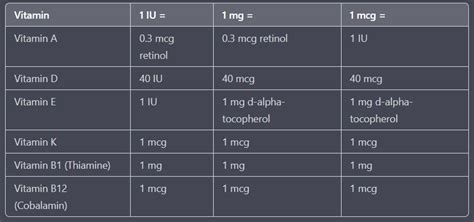How Many Grams In 200 Mg
Kalali
Mar 28, 2025 · 4 min read

Table of Contents
How Many Grams in 200 mg? A Comprehensive Guide to Metric Conversions
Understanding metric conversions is crucial in various fields, from cooking and medicine to science and engineering. One common conversion many people struggle with is figuring out how many grams are in milligrams. This article will provide a clear and comprehensive explanation of how to convert milligrams (mg) to grams (g), specifically addressing the question: how many grams in 200 mg? We'll delve into the conversion process, offer practical examples, and explore why mastering this conversion is important.
Understanding Grams and Milligrams
Before diving into the conversion, let's clarify the units involved:
-
Gram (g): The gram is the base unit of mass in the metric system. Think of it as a standard unit for weighing things.
-
Milligram (mg): The milligram is a subunit of the gram. The prefix "milli" means one-thousandth. Therefore, one gram is equal to 1000 milligrams. Milligrams are used to measure smaller quantities of mass.
This fundamental relationship – 1g = 1000mg – is the key to performing any gram-milligram conversion.
Converting 200 mg to Grams: The Simple Calculation
The conversion from milligrams to grams is straightforward. Since 1000 mg equals 1 gram, we can set up a simple proportion:
1000 mg : 1 g = 200 mg : x g
To solve for 'x' (the number of grams), we can cross-multiply:
1000x = 200
Now, divide both sides by 1000:
x = 200/1000 = 0.2 g
Therefore, there are 0.2 grams in 200 mg.
Practical Applications: Where This Conversion Matters
Understanding how to convert milligrams to grams is essential in many everyday situations and professional fields. Here are some key examples:
1. Medicine and Pharmacology:
Dosage instructions for medications are often given in milligrams. Knowing how to convert to grams can help patients, pharmacists, and healthcare professionals accurately measure and administer medications. For example, a medication might have a dosage of 200mg per tablet – this equates to only 0.2g. This understanding is vital for accurate and safe medication administration. Miscalculations can have serious consequences.
2. Cooking and Baking:
Precise measurements are crucial in baking, and many recipes might specify ingredients in milligrams, especially when using baking powder, extracts, or other small quantities. Converting milligrams to grams allows for accurate ingredient measuring to ensure successful baking outcomes. Consider spice blends - using the correct amount can drastically affect the final dish.
3. Scientific Research and Experiments:
In scientific settings, precise measurements are paramount. Researchers frequently work with small quantities of chemicals and materials, often measured in milligrams. Converting to grams provides a standardized way to record and compare data. This precision is essential for obtaining reliable and reproducible results.
4. Industrial Applications:
Many industrial processes involve handling extremely small amounts of materials, such as in microelectronics manufacturing or specialized chemical synthesis. Converting milligrams to grams ensures consistent measurements and quality control throughout the process.
Beyond 200 mg: Mastering the Conversion Formula
While we've focused on 200 mg, the conversion method applies to any quantity of milligrams. The basic formula is:
Grams = Milligrams / 1000
This formula allows for quick and easy conversion of any milligram quantity to grams. Let's illustrate with a few more examples:
- 500 mg: 500 mg / 1000 = 0.5 g
- 1500 mg: 1500 mg / 1000 = 1.5 g
- 10 mg: 10 mg / 1000 = 0.01 g
Common Mistakes to Avoid
While the conversion is straightforward, some common mistakes can occur:
-
Forgetting the decimal point: Dividing by 1000 often involves moving the decimal point three places to the left. Carefully track the decimal point to avoid errors.
-
Incorrect unit notation: Always use the correct abbreviations (mg for milligrams and g for grams) to avoid confusion.
-
Mixing up the conversion factor: Remember that there are 1000 milligrams in one gram, not the other way around.
Tips for Accurate Conversions
To minimize errors, consider these tips:
-
Double-check your calculations: Use a calculator to verify your results, particularly when working with multiple conversions.
-
Use unit analysis: This method helps ensure you're using the correct conversion factor and units cancel appropriately.
-
Practice regularly: The more you practice converting milligrams to grams, the more comfortable and accurate you'll become.
Conclusion: The Importance of Precision in Metric Conversions
The ability to accurately convert milligrams to grams is a fundamental skill with widespread applications. From ensuring safe medication dosages to performing precise scientific experiments, accurate conversions are vital. While the conversion itself is simple, understanding the underlying principles and avoiding common mistakes ensures precise and reliable results in any context where this conversion is needed. Remember the key takeaway: divide the number of milligrams by 1000 to obtain the equivalent number of grams. Mastering this simple conversion will significantly enhance your accuracy and proficiency in various fields requiring precise measurements.
Latest Posts
Latest Posts
-
76 Cm Is How Many Inches
Mar 31, 2025
-
What Is 12 Feet In Inches
Mar 31, 2025
-
Cuanto Es 30 Metros En Pies
Mar 31, 2025
-
138 Out Of 200 As A Percentage
Mar 31, 2025
-
How Hot Is 80 Degrees Celsius
Mar 31, 2025
Related Post
Thank you for visiting our website which covers about How Many Grams In 200 Mg . We hope the information provided has been useful to you. Feel free to contact us if you have any questions or need further assistance. See you next time and don't miss to bookmark.
